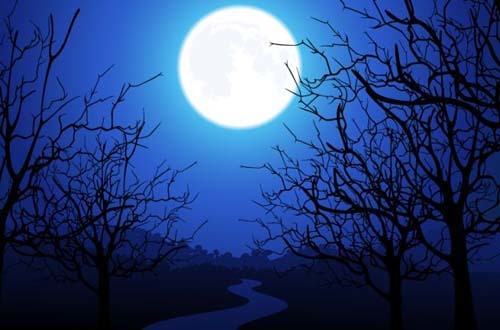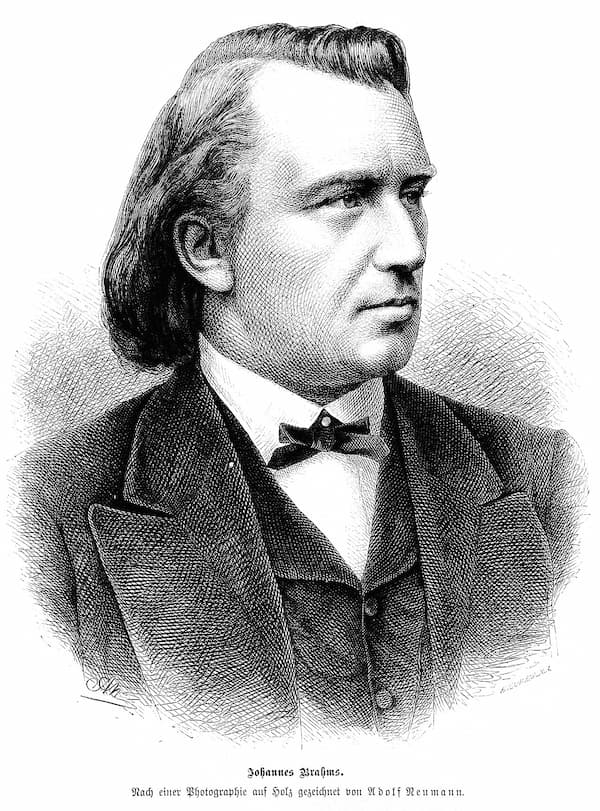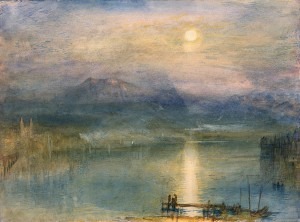
Turner: Moonlight on Lake Lucerne (1841)
Beethoven’s Moonlight Sonata springs to mind first. We wish that Beethoven had been the one to call his Piano Sonata No. 14 in C-sharp minor Op. 27/2, by that name, but he merely said it was “Quasi una fantasia”, i.e., a sonata in the manner of a fantasy. The title was given it by the poet Ludwig Rellstab, comparing the effect of the first movement to that of moonlight upon Lake Lucerne, and the name became popular.
Beethoven: Piano Sonata No. 14 in C-sharp minor “Quasi una fantasia”, Op. 27 , No. 2, “Moonlight Sonata”
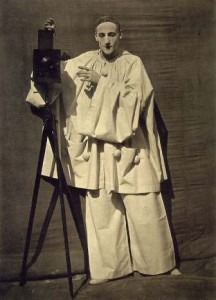
Nadar: Pierrot as Photographer
One of my favourite parts is No. 18, Der Mondfleck (The Moon Spot). Pierrot, dressed in his best black, finds a spot of white on it. He tries to rub it out and rub it out, ruining his coat and his evening, only to find, in the dawn, that it was just the light of the moon.
Schoenberg: Pierrot Lunaire, Op. 21: Part 3: XVIII. Der Mondfleck (Lucy Shelton, soprano; Da Capo Chamber Players)
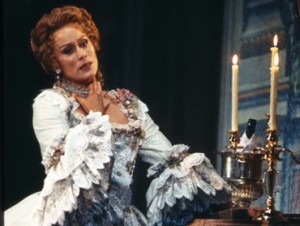
Kiri te Kanawa as the Countess in Capriccio
Debussy: Suite bergamasque: III. Clair de lune (Alexis Weissenberg, piano)
Debussy: Suite bergamasque: III. Clair de lune (arr. A. Caplet) (Lyon National Orchestra; Jun Markl, cond.)
In his opera Capriccio, Richard Strauss begins the final scene with some Moonlight Music – the Countess, who is being pursued by a poet and a composer, has set the two rivals to write an opera based on their discussions over the relative merits of words and music. In the morning, the Countess will give her judgment, and her hand, to her choice. In evening, though, as she ponders her decision, she walks in the moonlight, and Strauss’ beautiful music illuminates the scene and also subtly informs us of her desires.
Strauss: Capriccio, Op. 85, TrV 279: Intermezzo (Moonlight Music) (Dresden Staatskapelle; Rudolf Kempe, cond.)
The moon gives us the light with which to meditate, to think, to fall in love, or to be crazy – but in all ways it remains the inspiration for composers everywhere. Come to Risør and be inspired!
Risør Chamber Music Festival

